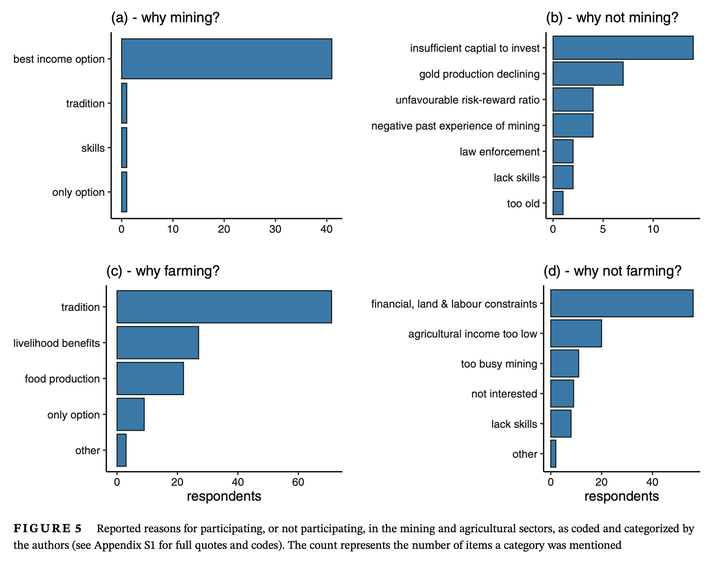Gold, farms, and forests—enforcement and alternative livelihoods are unlikely to disincentivize informal gold mining

Abstract
Informal gold mining (IGM) is a major driver of deforestation and source of global mercury emissions. Policy makers may seek to control the spread of IGM by enforcing rules and/or providing alternative livelihoods. We investigated the dynamics and drivers of IGM in northern Myanmar to shed light on the conditions needed for alternative livelihood and enforcement interventions to succeed. We surveyed 226 respondents who practiced mining and/or farming. We found that mining and agriculture provided complementary livelihoods for many respondents as they met different livelihood needs, and that many of the miners were economic migrants. Livelihood-based interventions based on agriculture/plantations—as currently planned by the regional government—are thus unlikely to provide true substitutes. The willingness of migrant miners to move under different economic circumstances suggests that livelihood-based interventions are unlikely to scale well—mining may simply be displaced to other regions, or new migrants might replace old migrants. We estimated that current enforcement efforts were insufficient and that a much higher level of enforcement—either constant presence of enforcement officials at each informal mining site, or confiscating equipment every month—would be required to make informal mining unprofitable. Enforcement effectiveness was further undermined by corruption in the guise of informal payments to local authorities. Our study is the first to estimate costs that enforcement imposes and the level of enforcement required to deter informal gold mining, and adds to the growing body of evidence that enforcement and alternative livelihood approaches alone are unlikely to deter informal gold mining.